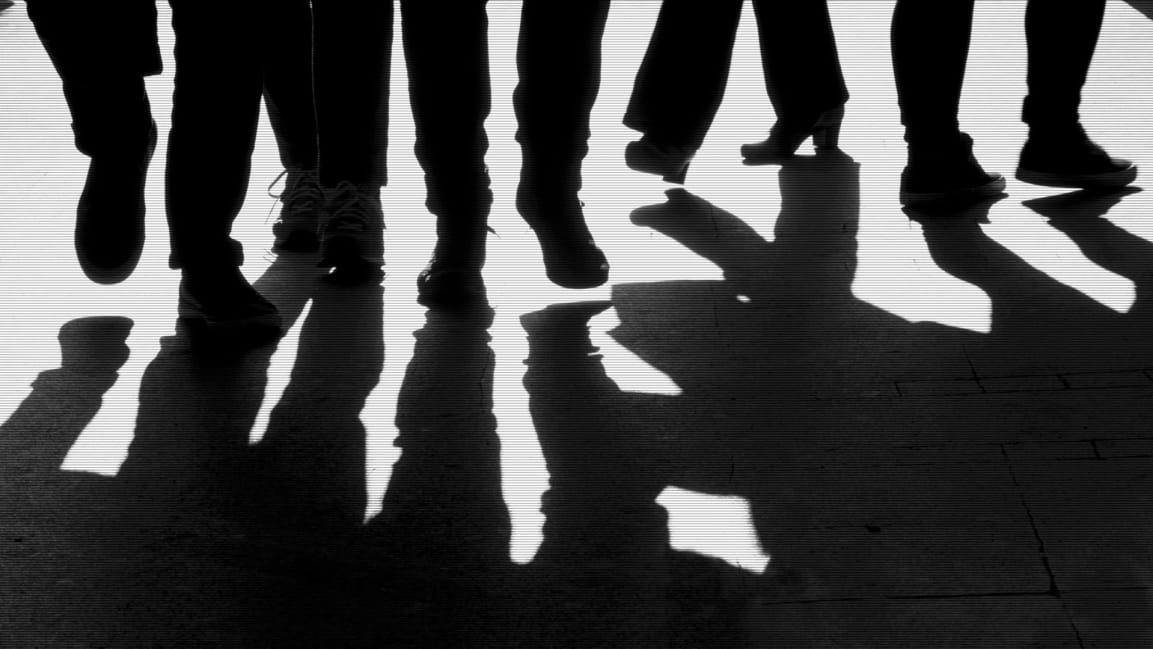There’s a gender crisis in media, and its threatening our democracy
When we squash 51% of the voices in our country, we are not only eroding public trust, we are also eroding the very foundation of our democracy. I’m referring specifically to the lack of gender equity in newsrooms, the impact of which, while subtle at first, is impossible to ignore.
From Harvey Weinstein to Jeffrey Epstein, the #MeToo movement has shown how female journalists influence the news stories that get covered. The importance of women’s reporting goes far beyond issues of fairness. It strikes directly at the heart of our country’s lifeblood. At a time when both democracy and media are in a crisis of trust, we need not look any further than gender equity as the key to restoring faith in both institutions.
Take the recent CNN Climate Town Hall for example. It featured five journalists as moderators—and only one (or 20%) of them was a woman. That’s a 31-point gap between women as a percentage of our population and women as a percentage of moderators, whose role is to serve as neutral participants and hold candidates accountable to the schedule and the questions at hand.
This is exactly how much the media favors men
Let’s start with a mutual understanding of how gender inequity manifests in today’s media industry, starting with the gender pay gap in journalism. While the overall pay gap tells us that women earn 80 cents for every $1 men earn, the media industry’s gender pay gap has its own set of characteristics.
Newsrooms across the country, including the Associated Press, Los Angeles Times, the New York Times, San Francisco Chronicle, the Wall Street Journal, and the Washington Post, all see men earning more than women. Here are a few stats worth highlighting, from a report compiled by the Women’s Media Center (WMC).
If we approach gender equity in the media industry from another view, we find female reporters not only earn less than their male colleagues, they also are a smaller percentage in the newsroom. Even though women outnumber men in journalism programs and colleges, they become the minority voice soon after entering the workforce.
On average, women represent 41.7% of newsroom employees and produce 37% of reports. Further, men snag 69% of all newswire bylines published by the Associated Press and Reuters, account for 63% of prime-time news anchors or correspondents, and write 60% of all online news.
There’s more.
Columbia Journalism Review’s “Who’s the Boss” report analyzed 135 of the nation’s most widely distributed newspapers and found their editors to be “overwhelmingly male and white.” Perhaps that explains why men wrote 59% of all A-section articles, according to the WMC. There is some equity though. HuffPost, Vox, and MSNBC give about 50% of their bylines to women.
When the majority voice behind news stories is male, the majority of news subjects and witnesses are male as well. At 24% of global news subjects and 20% of front-page sources, women’s points of view rarely get heard. Curiously, this trend spills over to the images depicted by media outlets.
On Facebook, where prominent media sources publish their news and where 43% of U.S. adults turn to for news according to Pew Research, men appear in images at double the rate of women. In fact, the majority of images accompanying news stories on Facebook show exclusively men. In images with multiple people, men outnumbered women by a factor of two to one. Broken down by topic, we are more likely to find women in images related to TV, music, and movies than in images related to the economy.
Moreover, older women in broadcasting such as Roma Torre, face a double bias in representation. Professional opportunities for female news anchors diminish with age, whereas opportunities for male news anchors increase with age.
And even when they’re given a platform to speak, women’s voices are often muffled by men. In the Democratic presidential primary alone, we’ve already witnessed how the underrepresentation of women in media has impacted the 2020 debates—both in terms of women as moderators and speaking time for candidates.
On the first night of the first Democratic debate this June, Senator Elizabeth Warren was asked four questions while the other candidates were asked two. Yet, Warren was not the candidate with the most airtime because men interrupted her approximately 70% of the time.
When the interruptions continued on the second night, it was Senator Kamala Harris who stepped in to stop the “food fight,” not the debate moderators. Perhaps gender equity in the media would have ensured all presidential candidates on stage receive fair opportunities to share their views with the voting public.
Whether it’s the pay gap, talent gap, or subject representation gap, gender inequity in newsrooms from New York to LA tarnish not only the credibility of journalism, it fundamentally undermines our democracy.
What gender inequity in media means for democracy
At its core, closing the gender equity gap in media is about strengthening our democracy through trust and upholding the First Amendment’s decree of the right to a free press.
For over 243 years, Americans have been living the great experiment of self-governance—the execution of modern democracy. The First Amendment, a pillar of our governing system, does more than give freedom to the press. It empowers the press with a unique responsibility to discover facts and present them to the public and for the benefit of the public. People can only govern themselves when they have reliable information. By way of the First Amendment, we the people have placed our trust in the media.
So what happens when we start to question the trust we gave to the press? It’s quite simple. We erode the foundation of our democracy: fake news, polarization, bias, secrecy, impoverished viewpoints.
When media outlets fail to represent the diversity of their communities, the chasm between journalist and reader widens. Our government of the people, by the people, and for the people weakens. As a nation, we may have lost trust in the public media, but we have not lost hope that it will return.
Initiatives already sparking change
Media outlets are already making progress to close their gender equity gaps, increase female representation in reporting, and gain public trust back.
The Financial Times, for example, recently discovered a mere 21% of all people quoted in their reports were women. They took action by developing a bot that analyzes first names and pronouns of sources to determine their gender. When the bot detects a gender imbalance, it automatically alerts section editors of the issue. The bot encourages writers to search for female subject-matter experts to include in their articles, and the impact is two-fold: it increases female representation in reports while increasing female readership. It’s good business sense.
In another example, the BBC launched the 50-50 Project to push for gender equality among on-air guests. In creating the 50-50 Project, BBC has developed the largest collective-action grassroots initiative for increasing female representation in the news to date.
There’s also Bloomberg’s New Voices initiative, which launched in April 2018 and has already made significant strides in amplifying the voices of women. In addition to quadrupling their global database of women experts, Bloomberg has increased the percentage of women guests on Bloomberg TV (from 10% to 18%) and the percentage of front-page stories that quote women experts (from approximately 2.5% to 10%).
Individuals in the media space are standing forward on gender equity, too. David Leonhardt, a columnist for the New York Times, wrote in a 2018 letter to readers how “less than 20% of the people mentioned in my weekly column have been women.” He then included a plan to correct the gender gap: “With help from those lists of female experts and other resources, I have created all-female Twitter feeds in several fields…If a discussion of, say, economics or politics that’s dominated by one gender seems a little strange to you, then you should feel deeply uncomfortable with the actual public dialogue on those subjects. Once you start paying attention, you can’t help but notice how shockingly male it is.”
Political scientist Samara Klar created a website—called Women Also Know Stuff—after getting frustrated with the overload of male political experts weighing in on 2016 elections issues. Klar’s website connects 1,900 female scholars to journalists seeking authoritative insight on political topics.
We still have work to do
While we should applaud the organizations and individuals working toward gender equity, we must acknowledge there’s still work to do to make gender equity ubiquitous across the journalism industry. It is the key to restoring public trust in media and democracy. Here are three steps we can take to get moving in the right direction.
Create industry standards on transparency
Media outlets should develop a voluntary code of conduct to standardize how they collect information, how they report information, and how they distribute information. A common set of standards would boost transparency by ensuring news reports are accurately fact-checked, labeled as either opinion or fact-based, and free of misleading advertisements.
Operationalize inclusion
News organizations should create new talent strategies to increase underrepresented groups across gender, ethnic, and geographic lines. These strategies should include the five pillars of talent (hiring, pay, promotion, performance, potential), and companies should publish their inclusion metrics annually.
Use journalism to foster a more diverse dialogue
S. Mitra Kalita, the senior vice president for news, opinion, and programming for CNN Digital, found that differences don’t have to be divisive; they can actually “illuminate common ground.” The journalism industry should critically consider its role in and duty to society. Rather than polarizing us, journalism can foster critical dialogue across political, economic, geographical, and demographic spectrums. These are the conversations that make for a robust democracy. In the marketplace of ideas, all members of society need access to accurate information and competing ideas to form their conclusions. We must not take things at face value.
The third Democratic debate will have four moderators, and only one (25%) will be a woman. Let’s call on debate organizers to guarantee equity among moderators. Then let’s call on moderators to put an end to women speaking less, men interrupting more, and men receiving credit for the work of women.
American journalism and democracy are in crisis. But we can choose to take action today and close the gender gap in journalism.
Katica Roy is the founder and CEO of Pipeline Equity.
(11)



